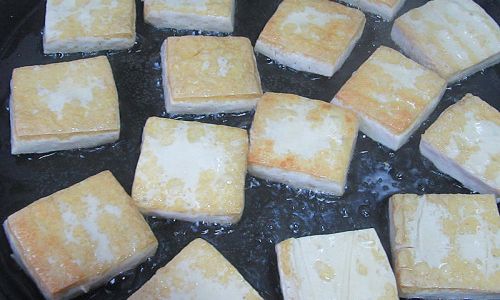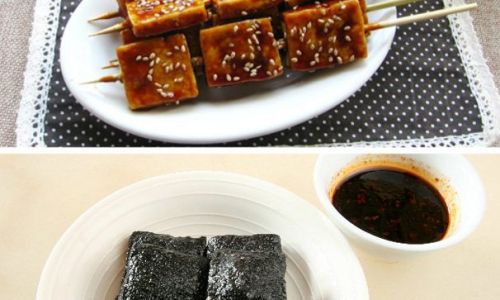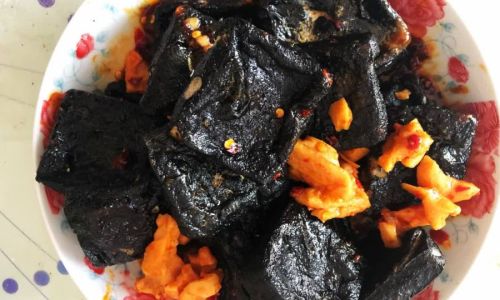Table of content
Stinky tofu, a iconic street food snack with roots in Chinese cuisine, has captivated taste buds and sparked curiosity worldwide. Despite its pungent aroma, which often intimidates first-time encounters, this fermented delicacy boasts a complex flavor profile that balances umami, saltiness, and a subtle sweetness when prepared correctly. Mastering the art of cooking stinky tofu at home transforms it from a polarizing street food into a culinary masterpiece. This guide delves into the history, science, and techniques required to elevate this humble ingredient into a dish that tantalizes the senses and leaves diners craving more.
Understanding the Essence of Stinky Tofu
Stinky tofu’s name derives from its distinctive odor, a byproduct of fermentation. Unlike regular tofu, which is made by coagulating soy milk and pressing it into blocks, stinky tofu undergoes a secondary fermentation process. This step introduces bacteria and enzymes that break down proteins and fats, creating volatile compounds responsible for its intense aroma. The fermentation process varies by region—some methods use fermented vegetable brines, while others rely on aged milk or rice wine. The result is a chewier texture and a depth of flavor that regular tofu lacks.
Selecting the Right Tofu
The foundation of exceptional stinky tofu lies in selecting the correct base. Fresh, firm tofu is non-negotiable. Soft tofu disintegrates during cooking, while extra-firm varieties resist absorbing the fermented brine. Opt for tofu labeled “firm” or “extra-firm,” preferably organic, to ensure a clean soy flavor. For authenticity, seek out pre-fermented stinky tofu blocks from Asian markets, which skip the months-long fermentation process. However, adventurous cooks can ferment their own using a brine of chili peppers, fermented bean curd, and spices.

The Fermentation Process: Patience is Key
Fermentation is where magic happens. To ferment tofu at home:
- Prepare the Brine: Combine water, salt, chili flakes, Sichuan peppercorns, star anise, and fermented bean curd in a sterilized jar.
- Submerge Tofu: Slice firm tofu into 1-inch cubes and immerse them in the brine.
- Ferment: Seal the jar and store it in a cool, dark place for 3–7 days. Shorter fermentation yields milder flavors; longer periods intensify the aroma and umami.
Pro Tip: Burp the jar daily to release pressure and prevent explosions. The brine should bubble gently—a sign of active fermentation.
Mastering Cooking Techniques
Deep-Frying for Crispy Perfection
Deep-frying is the most common method, yielding a crisp golden exterior and a creamy interior.
- Oil Temperature: Heat oil to 350–375°F (175–190°C). Too low, and the tofu absorbs excess oil; too high, and the exterior burns before the inside cooks.
- Frying Time: Fry tofu cubes for 3–4 minutes until puffed and golden. Drain on paper towels to remove excess oil.
Secret Ingredient: Coat the tofu in a thin layer of cornstarch before frying. This creates an audibly crunchy crust while locking in moisture.

Pan-Frying for a Lighter Touch
For a healthier alternative, pan-fry with minimal oil.
- Use a non-stick skillet and 2 tablespoons of oil.
- Cook tofu over medium heat, turning occasionally, until browned (6–8 minutes).
Pro Tip: Press the tofu between paper towels for 30 minutes before cooking to remove excess moisture, ensuring a crispier texture.
Steaming for Tender Results
Steaming preserves the tofu’s natural softness while infusing it with aromatic flavors.
- Place tofu in a steamer basket over boiling water.
- Steam for 10–12 minutes, then drizzle with a sauce of soy sauce, sesame oil, and minced garlic.
Crafting the Perfect Sauce
No stinky tofu dish is complete without a complementary sauce. Classic accompaniments include:

- Chili Oil Sauce: Mix chili flakes, Sichuan pepper, garlic, and hot oil.
- Fermented Black Bean Sauce: Sauté fermented black beans with garlic and ginger.
- Vinegar-Based Dip: Combine rice vinegar, sugar, and minced cilantro.
Creative Twist: For a fusion twist, blend peanut butter, hoisin sauce, and lime juice for a creamy, tangy dip.
Enhancing with Aromatics and Garnishes
Elevate your dish with layers of flavor:
- Fried Shallots: Crispy shallots add sweetness and crunch.
- Pickled Vegetables: Balance richness with tangy daikon or carrots.
- Fresh Herbs: Cilantro or Thai basil introduce a bright, herbal note.
Troubleshooting Common Pitfalls
- Overpowering Odor: If the smell is too intense, soak fried tofu in a mixture of water, vinegar, and ginger for 10 minutes before serving.
- Soggy Texture: Ensure oil is hot enough before frying. Cold oil leads to greasy tofu.
- Bland Flavor: Marinate tofu in a mixture of soy sauce, rice wine, and five-spice powder for 30 minutes prior to cooking.
Health Considerations
While stinky tofu is a protein-rich snack, deep-frying increases calorie content. Opt for air-frying or baking for a lighter version:
- Air-fry at 375°F (190°C) for 12–15 minutes, flipping halfway.
- Bake on a parchment-lined tray at 400°F (200°C) for 20–25 minutes.
Cultural Significance and Modern Adaptations
Stinky tofu’s history dates back centuries, with origins in China’s Ming Dynasty. Street vendors originally sold it as a cheap, nutritious snack for laborers. Today, it’s a global phenomenon, inspiring gourmet interpretations like stinky tofu tacos or truffle-infused varieties.

A Step-by-Step Recipe for Beginners
Ingredients:
- 1 block firm tofu
- 2 cups fermented brine (store-bought or homemade)
- 1 cup cornstarch
- 4 cups vegetable oil (for frying)
- 3 garlic cloves, minced
- 2 tbsp soy sauce
- 1 tbsp black vinegar
- 1 tsp sugar
- 1 red chili, sliced
Instructions:
- Ferment Tofu: Submerge tofu in brine for 3 days.
- Coat and Fry: Dredge tofu in cornstarch. Fry in hot oil until golden.
- Make Sauce: Sauté garlic and chili in 1 tbsp oil. Add soy sauce, vinegar, and sugar. Simmer for 2 minutes.
- Serve: Drizzle sauce over tofu. Garnish with cilantro and pickled vegetables.
Conclusion
Stinky tofu is a testament to the transformative power of fermentation and culinary creativity. While its aroma may raise eyebrows, one bite reveals a symphony of flavors that challenge preconceptions. By mastering fermentation, cooking techniques, and flavor pairings, home cooks can turn this humble ingredient into a dish that delights and surprises. Whether deep-fried to crispy perfection or steamed and drizzled with sauce, stinky tofu invites experimentation and rewards curiosity. So, embrace the stink, savor the complexity, and let this ancient delicacy redefine your understanding of umami.





0 comments